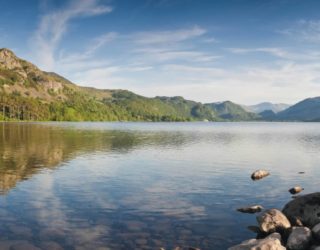The study of species distribution across space and time is referred to as biogeography. An understanding of biogeography is key to understanding
the differences in species assemblages between Australia and the United Kingdom.
One of the most influential people in the development of biogeography was naturalist, and co-founder to the theory of evolution, Alfred Wallace. As with
several of his contemporaries, Wallace realised that species were not randomly distributed, but instead could be classified as distinct assemblages
categorised within biogeographic regions. Wallace’s categorisation of biogeographic regions formed the premise of the system still in use today. However,
there was something troubling Wallace, which he never resolved and in fact it wasn’t resolved until half a century after his death.
For the most part, there are obvious barriers which separate different biogeographic regions. Examples of such barriers include the Pacific Ocean, Atlantic
Ocean, Sahara and Himalayas. Wallace understood that these barriers limited the exchange of individuals between biogeographic regions and provided
sufficient isolation for distinct assemblages to evolve independently.
However, there were situations where the barriers between biogeographic regions did not seem substantial enough to justify such a distinct difference.
The most striking example was the transition between the Asian and Australasian biogeographic regions within the Indonesian archipelago. Wallace mapped
a line (since named Wallace’s Line) between islands of the archipelago where there was an abrupt boundary between species assemblages. This boundary
included a separation between land masses of a relatively small distance of sea. At some points Wallace’s Line separates land masses by a sea distance
no greater than the English Channel separates England from Europe, yet the difference in species assemblages is startling. North-west of the line are
Asian species such as tiger, rhinocerous, elephant and monkey. South-east of the line are Australasian species such as echidnas, possums and kangaroos.
Wallace could not explain why such an abrupt transition should occur and it was not until half a century later that the answer became apparent. Wallace’s
Line was in fact the boundary of two tectonic plates and the plates were moving the previously isolated Australasia to closer proximity to Asia.
We now understand that all continents were once connected in the form of a super-content called Pangea. When Pangea existed the land masses that form the
UK and Australia were connected. Pangea started to break up 175 million years ago, and the UK and Australia have been separated ever since. The UK
was a peninsula of Europe until only 8000 years ago and remains in close proximity, which is why the species assemblages are very similar.
Australia became isolated when it separated from Antarctica 80 million years ago. The long period of isolation provided Australian species the opportunity
to evolve independently from the rest of the world, which is why it has a relatively high proportion of unique species such as kangaroos, koala and
platypus. As Australia has moved closer to Asia it has been possible for some of the more mobile species to migrate. Species which have entered Australia
from Asia include bats, various bird species and humans.
Therefore, the differences between the species of Australia and the UK is largely a result of the movement of tectonic plates over millions of years.
Image, right: Diliff










